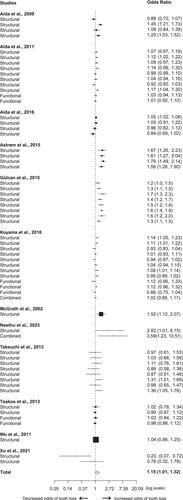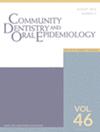Social Relationships and Tooth Loss in Adults Aged 60 Years and Older: A Systematic Review and Meta-Analysis
Abstract
Objective
To systematically assess current evidence on the extent to which social relationships are associated with tooth loss in adults aged 60 years and older.
Methods
A systematic literature search was conducted on PubMed, Embase, Web of Science, CINAHL and The Cochrane Library databases to identify relevant studies published from 1966 up to March 2024. Cross-sectional or cohort studies investigating the association between structural, functional and/or combined (structural and functional) components of social relationships and the number of remaining teeth or edentulism among community-dwelling or institutionalised older adults were included. Data were extracted on participants' and study characteristics, including study design, the type of measures used to assess social relationships (structural, functional, and combined), outcome measures and association estimates. The quality of the studies was assessed using the Newcastle-Ottawa Scale (NOS) for cohort studies and the adapted NOS for cross-sectional studies. The reported association between social relationships and the number of remaining teeth or edentulism was summarised using meta-analysis with robust variance estimation.
Results
Twenty studies were included in the review and 12 studies (125 553 participants) in the meta-analysis. Across the 12 studies, the average odds ratio (95% confidence interval) was 1.15 (1.01–1.32), indicating a 15% higher likelihood of having a lower number of teeth or edentulism for those with weaker social relationships. The GRADE certainty of the body of evidence was low.
Conclusions
Weak social relationships were associated with a lower number of teeth or edentulism in older adults. Our findings may inform potential public health approaches that target and modify social relationships to prevent and address older adults' oral diseases. Still, the directionality and the underlying mechanisms connecting social relationships and tooth loss need to be further explored by longitudinal studies with follow-up long enough for oral health outcomes or changes in social relationships to occur.
Trial Registration
Protocol Registration: PROSPERO (CRD42023417845)


 求助内容:
求助内容: 应助结果提醒方式:
应助结果提醒方式:


